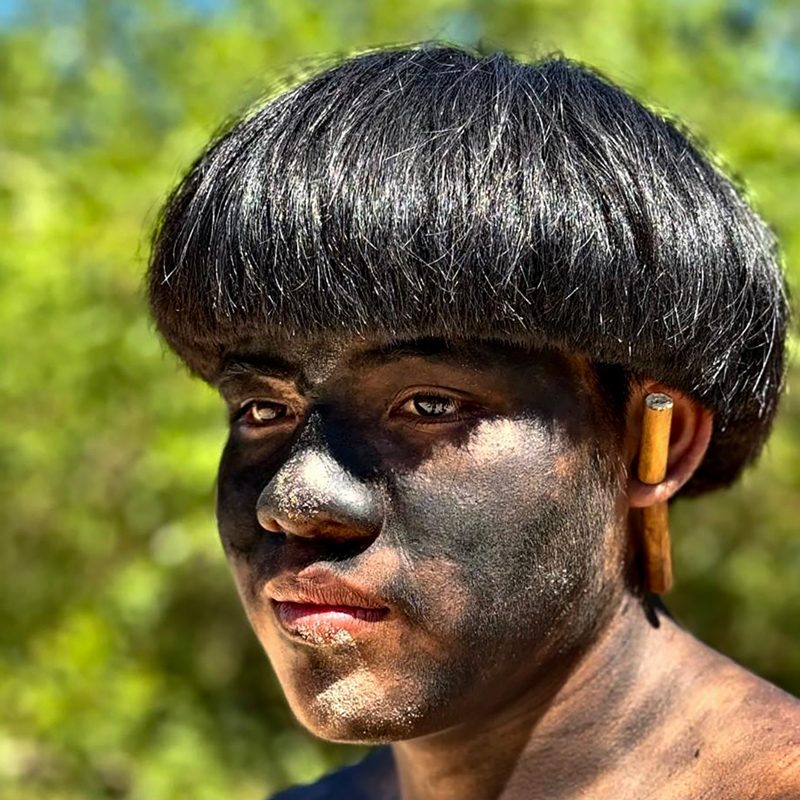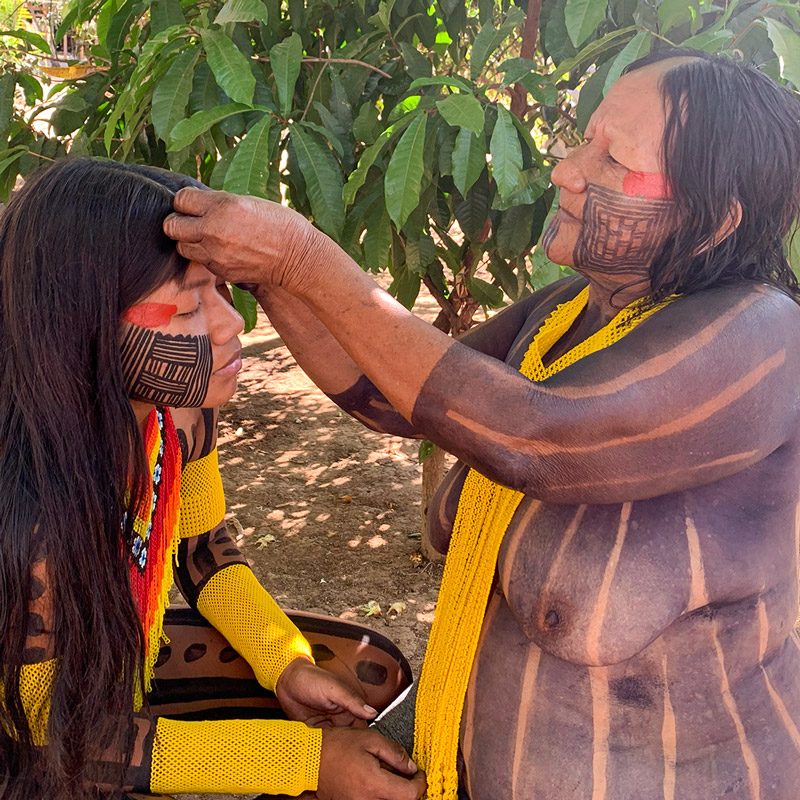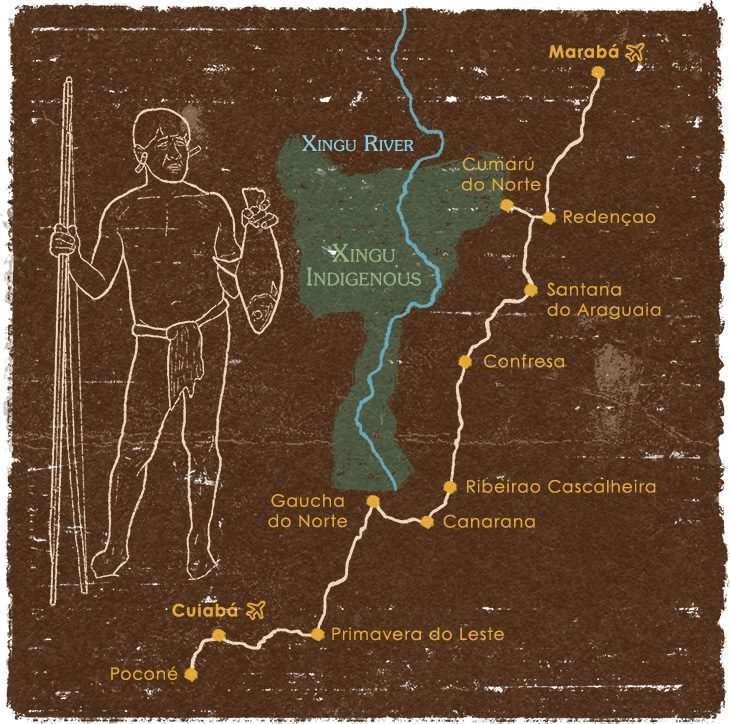Discover the highlights of this tribal trip to Brazil
Kayapó people
We will spend three days of our tribal trip to Brazil getting to know the culture and ancestral way of life of the Kayapó people, based on hunting, fishing, and gathering. Upon arrival at the Kayapó village, we will meet with the council of the community to introduce ourselves. Also, they will introduce themselves and explain aspects of their tribal organization. This will be a powerful first contact with a traditional tribe of the Amazon. The Kayapó or Mebengokré were first contacted in the late 1950s and currently live between the pre-contact world and the contemporary world. After the talk, we will be welcomed with a traditional dance, in which both men and women will participate. During our stay with the Kayapó people on this tribal trip to Brazil, we will witness a ‘naming’ ceremony in the village.Along their lives, each Kayapó will receive up to 4 different names from their grandparents or other relatives. During the ceremony, the child or adolescent will cover their body with symbolic paintings and will wear beautiful macaw feather headdresses. We will also go out with the women to collect wild fruits, palm hearts, medicinal plants and firewood. After, we will go to a pond or small river to see ancestral fishing techniques. In addition, we will observe how they prepare food with the collected food.
Kayapó body painting and ornamentation
In addition, during this tribal trip to Brazil, we will attend a session of body painting and hair shaving for a young girl. The Kayapó consider body painting an attribute of human nature. In the myth of the Star Woman (a cultural heroine responsible for the origin of cultivated plants), the metamorphosis from star to human being is carried out through painting and body ornamentation. Furthermore, the newborn, after detaching itself from the umbilical cord, is painted black to recognize it as a human being.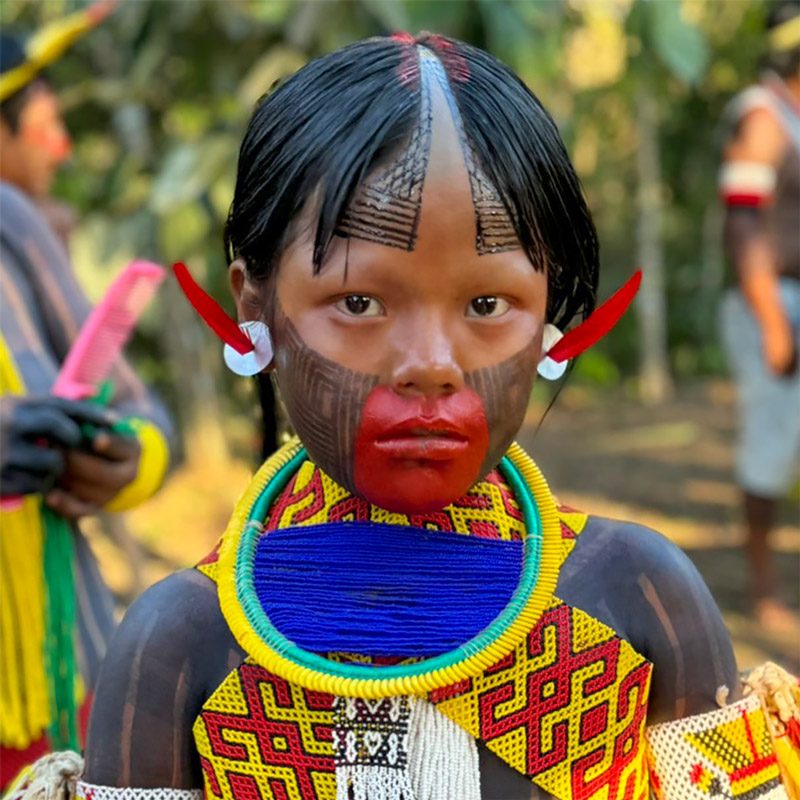
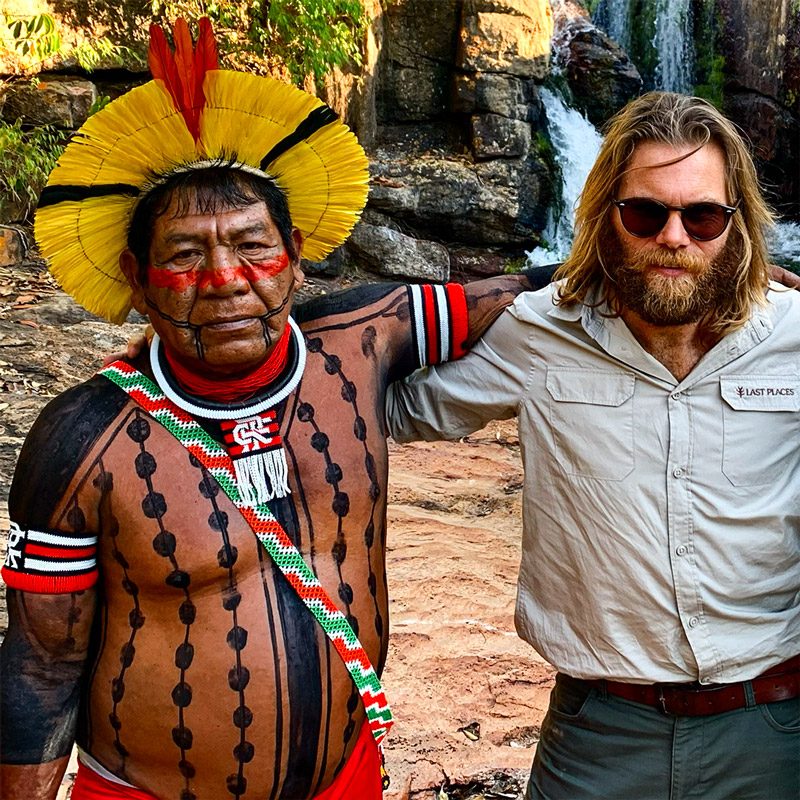
Waura people
During this tribal trip to Brazil, we will have the opportunity to meet the Waura ethnic group. Upon arrival, we will meet with Waura leaders, whom we will chat with about the elements that define this small Amazonian tribe composed of only 670 individuals. We will enjoy a welcome dance known as ‘tawaraná’ or the dance of the macaws. We will share a full day of this tribal trip to Brazil with the Waura community. On the beginning of the day, we will attend a female and male body painting session, followed by a music session with long flutes, a sacred instrument for this tribe. To close the morning’s cultural activities with a Waura, we will attend a wrestling session, known as ‘una una’, in the village’s central square. During this tribal trip to Brazil, we will be able to witness one of the most beautiful and spectacular ceremonies of this Amazonian tribe: the piquí fruit festival. This fruit is used to make the red paint that men wear in their hair and which they paint their bodies with. This ceremony is known in the native language as ‘mapulawashú’ and is celebrated when the harvesting of the piquí fruit begins During this ceremony, a pale-skinned girl usually appears, coming out of her seclusion imposed for being menstruating. The Waura believe that menstrual fluids harm men or that they also harm the crops, the gods, or the sacred emblems of the group. Women must be kept apart from men during the menstruation period and frequently undergo purification after each period. Recent research reveals, however, that retreat during menstruation is often in favor of women, providing them with a necessary break from the hard work they do during the rest of the time. This offers them special opportunities of fellowship with other women. We will conclude our experience with the Waura people on this tribal trip to Brazil around a campfire. We will chat about all these topics of interest with our Waura hosts.
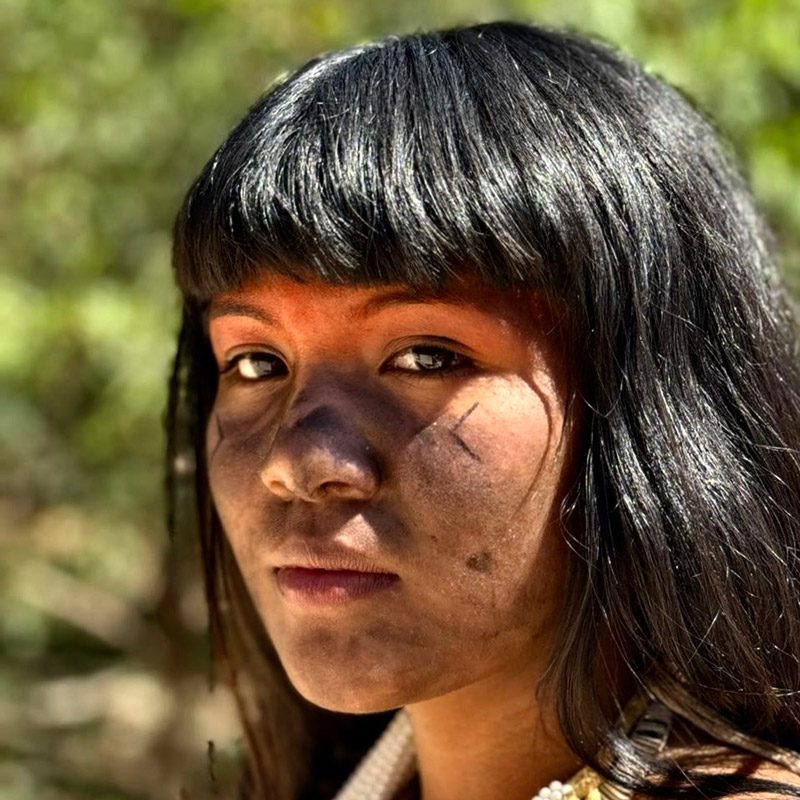
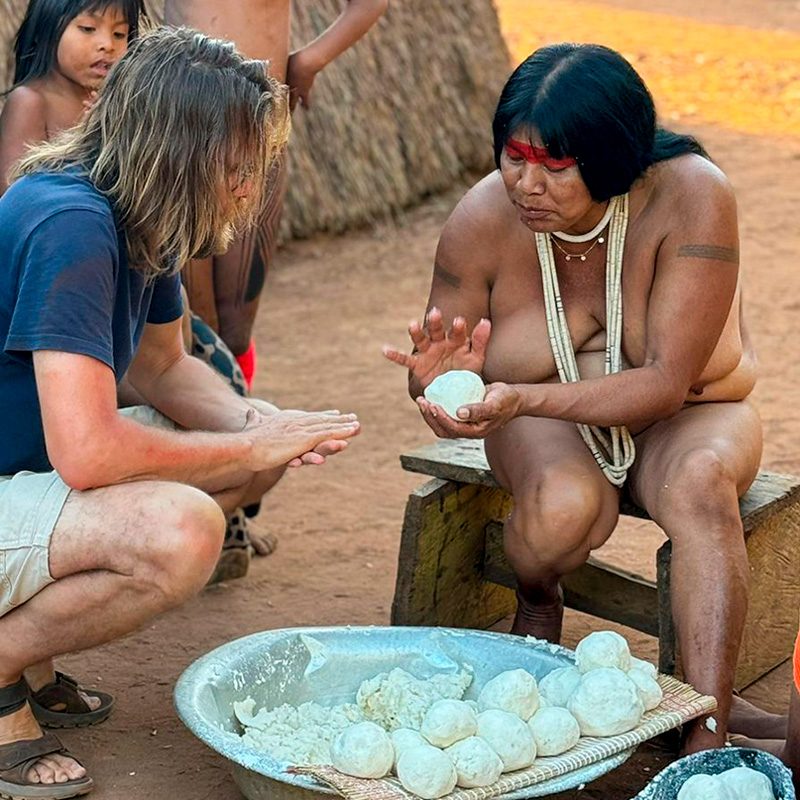
Tapirapé people
During this tribal trip to Brazil, we will visit the main village of the Tapirapé people. Our intention will be to be able to see some young Tapiaré in the process of initiation (a ceremony typical of the dry season). During this ceremony, the young man is decorated with beautiful feather headdresses. In addition, his lower lip is pierced to place a decorative piece of wood that he will wear for a limited period of time. Apart from this traditional ceremony, we will also be interested in its famous feather crafts known as ‘tawa’ or ‘big face’, a type of mask made with multicolored feathers.
Awaeté or Asuriní people
During this tribal trip to Brazil, we will arrive by motorized canoe to an Awaeté camp. Officially contacted in 1971, they stand out for their material culture, which includes the production of ceramics, weaving, and basketry. But, they are characterized by being virtuosos of Amazonian indigenous art through the application of various geometric drawings, both in facial-body ornamentation and in ceramics and other objects. Within the Awaeté culture, the decoration of the human body accepts any drawing motif applied to ceramics. However, the ‘juaketé’ pattern is the only one used exclusively in female body painting, which translates as’real painting’, where the drawing is subordinated to the shape of the body. In the ‘juaketé’ pattern, the circle from which the lines and rhombuses that cover the trunk and thighs start is applied to the joint of the legs and trunk. It follows the ‘tamkyjuak’ (rhombus) pattern, which translates as ‘leg painting’, typical of that part of the body. The ornamentation of the body of the Awaetés with a geometric drawing expresses content related to social categories. Not only the body is painted, but also the different objects of material culture. In such a way, the drawing is abstract, decorative and symbolic, therefore expressing the basic notions of thought of this indigenous community, which refer to the representation of supernatural beings, nature, and culture.
Mascarados
During this tribal trip to Brazil, we will visit the colonial municipality of Poconé, founded in the 18th century, with the aim of meeting the ‘mascarados’. This is a traditional and folk dance association typical of the town of Poconé. It is a dance that has indigenous roots due to the form of presentation that reveals the customs of the Indians, enriched by the Spanish colonizers who arrived here from neighboring Bolivia. The participants are masked men with hats with feathers, mirrors and other decorations who play the roles of ladies and gallants. We will do a photo session with several masked people. After lunch, we will return to Cuiabá.
© Photos by Joan Riera taken during an tribal trip to Brazil.
► Download the itinerary for this tribal trip to Brazil
Click on the button below to easily reach the form to book your place for this tribal trip to Brazil.
